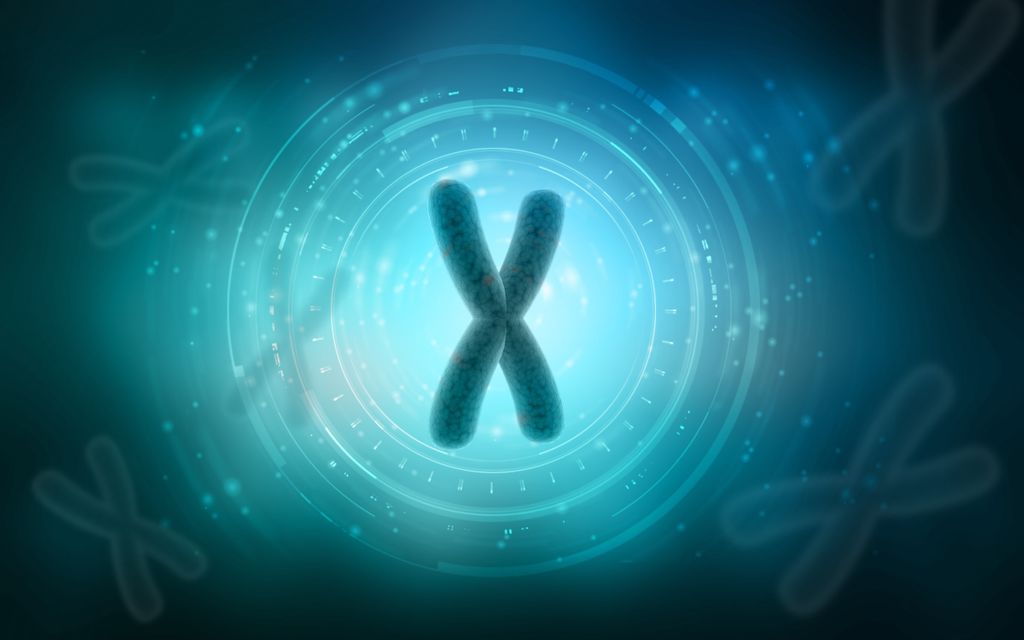What are micro chromosomes?
Specifically, these minute chromosomes were observed in birds and reptiles, accompanied by more or less large chromosomes, those that students are accustomed to studying, especially in humans. Moreover, it has been observed that mammals, including humans, do not have these exact chromosomes (with the exception of the platypus, which certainly confirms its status as an exotic creature).
The structure of these small genetic information centers is quite similar to that of large chromosomes. The main difference is the size. Another notable difference: the density of their genes.“In micro-chromosomes, we observe a density of about 40 genes per megabyte(DNA unit of measure, editor’s note), as opposed to only 10 to 17 for large chromosomes”,Claire Rogoll, CNRS researcher and deputy director of the Epigenetics and Cell Fate Unit at the University of Paris explains. This difference in density is explained by the large presence, in large chromosomes, of very large fragments of DNA without information, and therefore not able to code for proteins. In human DNA, for example, only 2% of DNA can be encoded into proteins. Of the remaining 98%, without information, roughly half of the DNA corresponds“The sequences are repeated in multiple copies, some of which may be traces of viruses, accumulated over generations”identifies the researcher. Because microchromosomes contain less ‘unusable’ DNA, they will therefore have more free scope for gene transfer.
>> Read also:They made the first artificial chromosome
The majority of micro-chromosomes
Researchers whose work has been published inPNAS,He conducted a study that is perhaps a pioneer in the discipline.“This is certainly the first study to do such a broad analysis and with such a decision.”researcher says. Thanks to access to genome sequence data, the karyotypes of different species can be studied in more detail, thus providing a more comprehensive view of vertebrate genetics. With a relatively large number of species studied, some of which diverged several hundred million years ago, this study opens“New Perspectives on Chromosome Evolution”Researcher continues.
By analyzing the distribution and quantity of chromosomes in species of reptiles, birds and mammals, the study first revealed that only mammals did not have precise chromosomes. In reptiles and birds, on the contrary, there are also, in addition to large chromosomes, minute chromosomes rich in genes. Finally, these miniatures are generally very well preserved in vertebrates, which appear to be the majority organisation, in contrast to what one might imagine under the influence of human vision bias.
The study also shows that in nearly all birds, all of the exact chromosomes look alike, and sometimes even nearly identical to those in reptiles, confirming that mammals are separate when it comes to chromosomal organization. In the platypus, a mammal that lays eggs, the originality is still there: it is already there“The fusion of minute chromosomes one by one which appears to form their large chromosomes”Claire Rogol explains.
>> Read also: The location of genes on the chromosome affects the different characters
Better understanding of chromosomal evolution
This observation could be a clue to the evolution of chromosomes. Miniatures are actually ancestral copies of large chromosomes, the latter having “parasitic” effects, accumulating little by little genetic information. Hence the loss of gene density on these chromosomes, which would also be the outgrowth of recombination and fusion of microchromosomes. This theory also appears to be supported by the observation of micro-chromosomes alone (without macrochromosomes) in Amphioxus, an ancestral invertebrate fish whose family formed more than 600 million years ago.
By showing that long chromosomes are more present in mammals, the study raises the question of the link between the formation of large chromosomes and the ability of mammals to colonize highly diverse environments.“We know that repetitive DNA sequences contribute to the evolution of species by creating new genes or by modifying the activity of existing genes.”Claire Rogol explains. However, it remains to be determined whether and how the accumulation of these repetitive sequences played a role in the evolution of these large chromosomes and what are the effects of these rearrangements on the function of the genomes.“It’s hard to tell right now.”The researcher concludes.

“Subtly charming problem solver. Extreme tv enthusiast. Web scholar. Evil beer expert. Music nerd. Food junkie.”

